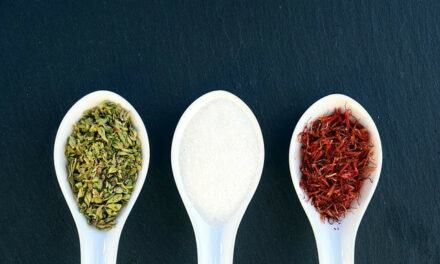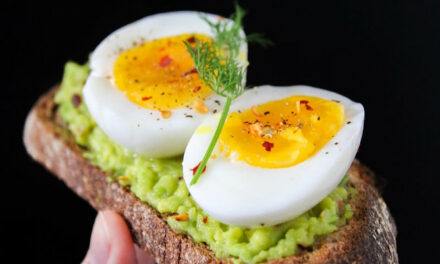If you have ever been to the Southern United States, then you may have heard of this popular breakfast dish called Grits. This creamy cereal has now become incredibly popular even beyond the Southern United States, that many people wonder what makes it exceptional.
Can Diabetics Eat Grits? Monitoring your diet and being cautious about the food that could cause blood sugar spikes could be a real hassle for a person with diabetes. If you have had grits before or if it is one of your favourite breakfast cereals, you may be wondering if you need to strike it off your breakfast routine as part of your diabetes management.
This article explores grits, its nutritional value, and other details on whether it is diabetic-friendly, keto-friendly and so on.
Let’s starts with defining Grits.
What Are Grits?
In simple words, grits is a steaming porridge made of ground corn. Grits are a popular dish among the southern United States, and often served as breakfast or side dishes with other flavourings.
Like cornmeal or polenta, the corn used to make grits are dried and ground, but much coarser. They are sometimes white or yellow, depending on the kind of corn used. But unlike cornmeal, grits are preferably made from dent corn.
Dent corn is a variety of corn not as sweet as sweet corn, but with a starchier and softer kernel. When the corn is processed using an alkaline product (lye water or lime) which removes the hull, it is then called hominy. Most people refer to grits as “hominy grits”.
You can cook grits in liquids such as water, broth or milk. The ground corn granules has to be cooked in any of the liquids mentioned for some time, until the mix becomes a porridge with a thick creamy consistency.
To spice things up, flavourings such as sugar, cheeses, butter, syrup, and meats, including shrimps, bacon and catfish, are often added to the meal. If you’re curious about what it tastes like, picture something mild, very close to the taste of home-made cornbread.
There is no distinct flavour or taste in grits since the corn used to make them are usually processed. That is to say. The more pronounced flavour will be from the ingredients you used in preparing the dish.
What Is The History Of Grits?
Grits is a popular Southern treat, although some may argue it as the first true ‘American’ food. It has its origins from the Native American Muskogee tribe, who populated most of the Southern U.S. during the 16th century.
The native tribe prepared a corn dish with corn similar to hominy. They would grind the Indian corn in a stone mill creating the coarse texture of the grits we are familiar with today.
Colonists, who first arrived at today’s Jamestown, Virginia, in 1607, probably discovered this traditional dish through their first experience with the Native Americans. The Native Americans passed down their preparation methods to neighbouring settlers because hominy was a form of currency.
In the 17th century, enslaved Africans who worked in the Southern plantations often received grits as part of their rations. They would catch creek shrimp and other fish without knowing the slavers’, and cook them with the grits.
Afterwards, grits and shrimp persisted as a breakfast dish in the Lowcountry Southern coasts, until in 1982 when Bill Neal, a chef based in North Carolina, created a recipe that brought fame to grits.
Bill Neal’s recipe fused cheese grits with Parmesan and cheddar as a base, topped with shrimp and bacon, mushroom as well other ingredients. After The New York Times published his recipe in 1985, grits continued to gain popularity throughout the South, and was later adapted to suit local ingredients and flavours.
Today, more than 150 million pounds of grits is produced annually, and more than 67% are consumed in the Southern U.S. The state of Georgia even prepares grits as their official food!
Types Of Grits
Grits come in several varieties that you can choose from, including:
- Stone-ground
Whole, dried corn kernels ground in a mill produces stone-ground grits with a coarse texture. The grits are made in the same way grits were made in the 1900s, giving it a traditional feel. Although it is common in the South, you may not easily find it in grocery stores because it takes a while to cook and has a short shelf life.
- Hominy
To make hominy grits, the corn kernels are first soaked and softened in an alkali solution. The softened outer shell (hull) is removed, and afterwards, the corn kernels are further processed to produce hominy.
- Quick/Regular
Like hominy grits, they go through processing which includes removing the hull and germ of the corn kernels so their shelf life is longer and they cook faster. Quick grits are finely ground. Regular grits, on the other hand, are medium ground.
- Instant
Instant grits come precooked and dehydrated; they have their hull and germ removed. Simply adding hot water to it is enough to cook it. Southerners would rather not have instant grits, but they are popular and available in grocery stores.
Common Ingredients In Grits
Instant grits are bland with less flavour compared to the coarse grind varieties with a more complicated taste and flavour.
For a flavour boost, you may choose to replace some of the water for cooking the grits with –
- Broth (vegetable or chicken)
- Stock
- Milk
- Buttermilk
- Or heavy cream.
For extra savoury flavour when cooking shrimp and grits with roasted or braised meat as sides, using broth or stock as the liquid base would be ideal. If you wish to prepare grits in a breakfast casserole or cheese grits, then adding diary (for a touch of sweetness and richness) is ideal.
The flavour difference is eventually determined through the ingredients you use to prepare your recipe. Some common ingredients used in preparing grits include:
- Butter
- Cheddar cheese
- Shrimp
- Mushroom
- Bacon
- Tomatoes
- Egg
- Sautéed vegetables
Nutritional Content
An ounce of cooked grits counts as ½ cup. About 6 ounces is the recommended daily intake for a 2,000 calorie diet.
The nutritional content, according to USDA, for 257 g serving of regular grits (1 cup) include:
|
Amount per serving |
% of Reference Daily Intake (RDI) | |
|
Calories |
182 | |
|
Calories from fat |
11 | |
|
Total Carbohydrates |
38 g |
13 % |
|
Sugars |
0.3 g |
– |
|
Dietary fibre |
2.1 g |
8 % |
|
Protein |
4.4 g | |
|
Total Fat |
1.2 g |
2 % |
|
Saturated fat |
0.2 g |
1 % |
|
Cholesterol |
0 mg |
0% |
|
Potassium |
69 mg |
2 % |
|
Sodium |
51 mg |
0 % |
|
Vitamin A |
0 % | |
|
Vitamin B6 |
7 % | |
|
Vitamin C |
0 % | |
|
Iron |
8.1 % | |
|
Calcium |
0.3 % | |
|
Zinc |
4% | |
|
Magnesium |
5 % | |
|
Phosphorus |
4 % | |
|
Thiamine |
18 % | |
|
Folate |
25 % | |
|
Riboflavin |
12 % | |
|
Niacin |
13 % |
How Are Grits Compared To Other Cereals?
Grits is generally associated with corn, but it is not the only type of grits or breakfast cereal out there. Although grits is a corn cereal, other hot cereals can also be made from whole grains such as wheat, rice, barley and oats.
People with diabetes are generally advised to avoid whole grain “healthy foods” due to their effect on insulin and blood glucose levels. We will look into this in a bit.
Let’s check out other breakfast cereals compared to grits.
|
Cereal |
Calories |
Total Carb (g) |
Protein (g) |
Fibre (g) |
Fat (g) |
|
Grits (50g) |
175 |
38.7 |
3.7 |
1.2 |
0.6 |
|
Cream of Wheat (50g) |
166 |
34.8 |
6 |
4.5 |
0.7 |
|
Cream of Barley (50g) |
130 |
25.0 |
4 |
5 |
1 |
|
Millet (50g) |
119 |
23.6 |
3.5 |
1.3 |
1 |
As you can see, they are all starchy and whole-grain foods, loaded with carbs! Consuming any of these high carb cereals in the morning will raise your blood glucose for a few hours, and by lunch, you would be feeling energy drained.
If you are looking to lower your blood sugar and effectively lower your carb intake, about 50 – 80 grams of carbs a day should be the maximum.
Are Grits High In Carbs With A High Glycemic Index?
You can tell how fast a food will raise your blood sugar levels from the glycemic index and glycemic load.
On a scale of 0 – 100, with 100 as the highest, grits measures a glycemic index (GI) of 69 and glycemic load (GL) of 14, which is above average. As mentioned earlier, eating a lot of it will raise your blood sugar levels, whether it is yellow or white grits.
Grits has almost zero sugar, but contains a lot of carbs and low fibre content. The various types of grits also have varying GI and GL.
For instance, stone-ground grits have a lower GI and GL compared to refined or instant grit. Essentially, grits with thicker individual particles and more fibres have less impact on your blood sugar.
Popular Brands Of Grits
We have researched and listed the top popular brands of grits, according to their individual appeal in the grits market.
Stone-ground grits may not be as popular as the more common instant grits, but they are a much healthier option. In terms of authenticity, stone ground grits are the best quality. They may take longer to cook, but the creamy, rich flavour is worth your time.
- Palmetto Farms
There are about 3 varieties from this brand produced in a wheat-free facility – mixed stone-ground grits, white stone-ground grits and yellow stone-ground grits. The yellow and mixed varieties are popular for their lighter flavour. However, lovers of traditional southern grits find it to be lacking in flavour.
- Charleston Favourites
This brand also comes in 3 stone-ground varieties depending on your preferences. Their major drawback would be that they produce grits in a facility that also deals with soy, egg, wheat and eggs, which could cause allergies to sensitive people.
- Weisenberger
They are a local Kentucky product, made from white corn (non-GMO). It is stone-ground, but surprisingly it cooks in 25 minutes or less. Although its texture is not a coarse grind, it depends on your preferences.
- Old School Brand
Their stone-ground grits are made using traditional milling techniques, giving them a very coarse texture. Some people love its texture, but it may be too coarse for others used to the creamy texture of hominy.
- Carolina Plantation
This stone-ground grits gives off a very rich creamy flavour, but takes a whole hour to cook while stirring intermittently.
Popular instant grits brands include:
- Quaker Instant Grits
These creamy smooth grits takes just a few minutes to cook and serve. The flavour and nutrients may not be as rich as the stone-ground, but some people can’t even tell the difference because it tastes almost as good. It comes in a bunch of varieties and flavours that you can choose from, and easy to get your hands on.
Possible Health Benefits Of Grits
Grits contain antioxidants, vitamins
and minerals, which provide various health benefits.
- Antioxidants
Grits are whole grain with antioxidant properties that helps in the mitigation of cellular damage caused by free radicals in the body.
Its benefits include –
- Reduced risk of type 2 diabetes
- Reduced risk of heart disease and some cancers
Zeaxanthin and lutein are two antioxidants present in grits. These antioxidants are known to improve vision and eye health, as well as protect against eye diseases that come with old-age. However, because lutein is fragile and easily dissolves in heat, frying your grits will reduce its lutein content.
- Nutrition
Grits is a highly nutritious food and a great source of several B-complex vitamins, including – niacin, riboflavin, folate, thiamine, and pyridoxine.
A single serving of stone-ground grits delivers about 10% of the daily recommended intake of iron, which is essential for the production of red blood cells. There are, of course, several other nutrition found in grits, as mentioned earlier in the nutritional contents.
- Lowers risk of Anemia
The elderly easily get affected with iron deficiency anemia. Luckily, grits contain a lot of iron that can guard against it. Grits are also high in folate, which can prevent vitamin deficiency
anemia.
Can Diabetics Eat Grits? What Research Say?
When our body undergoes digestion, carbohydrates are broken down into glucose that enters the bloodstream. The insulin hormone will then convert the glucose into energy for later use.
People with diabetes; however, are unable to generate or respond well to insulin, according to the research by NIH. That is why after eating loads of carbs, they may face dangerously high blood glucose levels.
In any case, people with diabetes are always advised to limit their intake of high-carb foods and opt for balanced meals
containing protein, carbs and fat.
Plain grits, whether yellow or white, have almost no sugar.
You may think corn is a vegetable, right? Yes, but a “starchy” vegetable, so it is quite high in carbohydrates or carbs. A serving of cooked grits (257 g) is loaded with over 30 grams of carbs.
Since corn grits are high in carbs, naturally, it can raise your blood glucose. Notwithstanding, you can eat grits even if you have diabetes. A research
study discovered a link between consumption of foods with high fibre content such as whole grains, and lowered risk of developing cardiovascular disease, obesity and diabetes. The Journal of Nutrition also has research that supports this claim.
Again, foods with a high glycemic index do not necessarily lead to blood sugar spikes in people with diabetes. Several factors need to be considered according to PubMed. The portion you consume, and what you eat them with are some of those factors.
For instance, consuming 2 cups of grits is more likely to increase your blood glucose compared to eating ½ cup of grits with some eggs or diabetic-friendly foods.
So, if you want to eat grits, it should be in small portions and with other healthy foods so that it won’t have much effect on your blood glucose. However, knowing that the glycemic index of excessively processed grits such as instant grits is higher, a better choice would be stone-ground grits. They are less processed with more fibre, more flavour and fewer calories.
Can I Eat Grits On Keto?
Grits are generally high in carbs and not an ideal keto-friendly dish. For someone on a ketogenic diet, achieving ketosis requires the glycogen in the liver to completely run out, before the body will begin to produce ketones. So, when we talk keto-friendly diet, it simply means the food is low in carbs.
In attempting to lose weight by embracing keto, you already have to deal with hunger and insufficient nutrition. You could eat grits just for fun, but it would only be a very little portion and may not be worth it. Although for some people who love grits, that little bit of portion is worth the effort.
Is Grits A Better Option Than Oatmeal?
It is a tough choice deciding the better choice between these two popular delicacies. Comparing their nutrition and calories may give us a hint.
In terms of nutrition, a cup of grit contains five times the amount of folate in oatmeal. Folate is essential for expecting mothers. However, a cup of oatmeal has 0.68 milligrams of vitamin B6, while the same amount of grits contains 0.46 milligrams. Both are great choices for preventing vitamin B6 deficiency.
In terms of calories, a cup of plain cooked oatmeal has 166 calories compared to the same amount of plain cooked grits, which has 182 calories.
As for the fibre content, 50 grams of oatmeal contains 3.3 grams of fibre, while 50 grams of grits has just 1.2 grams.
Nutritionists love oatmeal for its high fibre content and few calories. If you were trying to shed some weight, grits would be the better option with less fat.
As for carbs, they’re pretty much at the same level. Oatmeal, according to research, contains more fibre, which slows down the breakdown of carbs and allows better control of blood sugar during the day.
But, many people cannot eat bland oatmeal without some bit of sweetness. Thus, it contains some sugar.
In any case, if you have diabetes, whether you choose to eat oatmeal or grits as a breakfast meal, your blood sugar may be impacted. Nevertheless, when you eat them plain, both of them are great healthy choices.
Other Healthier Meal Alternatives To Grits For Diabetics
- Brown rice
Brown rice has a chewy texture, loaded with nutrition and a nutty flavour. It provides essential vitamins and minerals and contains less fat, cholesterol and sodium.
Brown rice processed into puffed cereal still amazingly retains most of its nutrients. Even though it has a lot of carbs, other nutrients such as fibre, vitamins and minerals, as well as antioxidants, help to keep blood glucose levels in check.
You should be eating small portions paired with healthy fats for better blood sugar control.
- Oats
Oats are popular as a whole-grain choice for diabetes management. This meal can easily fit into your breakfast routine, lunch or dinner. Opt for rolled oats or steel-cut instead of the instant variety that are highly processed with less fibre.
- Bulgur
Bulgur wheat is no doubt a great source of fibre – a single cup of cooked bulgur contains as much as 8.19 grams of fibre with 33.8 grams of carbs. It fits perfectly as a hot morning cereal.
Bulgur helps with weight loss, improved digestion and reduced risk of chronic diseases.
- Wheat berries
Here is another flavoursome whole grain that fits well into a diabetic diet. Wheat berries are just an unprocessed version of whole wheat kernels. It is versatile and can be prepared into various kinds of delicacies or simply served for breakfast as you would prepare oatmeal.
Wheat berries are fibre-rich and nutritious, measuring about 160 calories for a cup of cooked serving.
- Barley
Like other high fibre whole grains, barley is beneficial to people with type 2 diabetes mainly for its fibre.
A study conducted by the British Journal of Nutrition showed that people who consumed barley meals consecutively for 3 days showed improvements in their insulin sensitivity, metabolism and reduced insulin and blood sugar levels.
Barley’s fibre seems to multiply the amount of helpful hormones in the gut.
Conclusion
Grits are indeed a Southern delicacy and the favourite breakfast enjoyed by many across the globe. Many of its nutritional content has amazing health benefits, and may help in the management of diabetes for some. However, its carbs are above average and can raise your blood sugar levels. If you have diabetes, then try to eat moderately and in smaller portions.
Additionally, eating just plain cooked grits could be boring sometimes. Pairing it up with other low-carb diabetic-friendly ingredients will not only boost its flavour and nutrients, but also reduce your meal’s glycemic index and glycemic load.
You may be tempted to use some of the “good” stuff to fix your grits porridge, but that may not be the best choice. Swap bacon for shrimps, cheese products for organic full-fat cheese, fried chicken
for grilled or baked chicken, dried fruit for fresh fruit, and sugar for honey
or pure maple syrup. These are much healthier instead.
Finally, opt for stone-ground varieties whenever possible. The less processed it is, the better.













